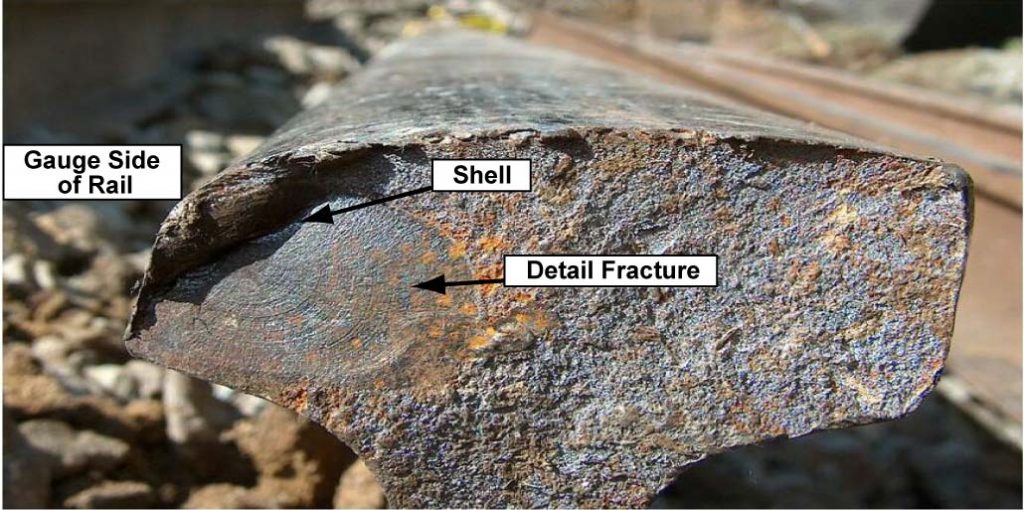
The CNBC to applied its world-class scientific tools to help the Transportation Safety Board understand the underlying reasons for rail failures.
Source: Canadian Neutron Beam Centre (CNBC)
Contact: cnbc@cnl.ca
Image: Transportation Safety Board
43 cars of a 140-car freight train derailed along the north shore of Lake Wabamun, west of Edmonton, Alberta, in August 2005. The derailment ruptured 12 of the cars, spilling about 730,000 litres of bunker C fuel oil and 88,000 litres of pole oil, a potentially hazardous wood preservative, along the shore and into the lake. The spill affected wildlife and the local environment. Local residents were advised to avoid use of water for drinking, gardening or swimming.

A fracture in rail recovered near Lake Wabamun, Alberta, after the derailment
Suspect pieces of track recovered from the area where the trains derailed were sent to the Ottawa lab of the Transportation Safety Board (TSB) for metallurgical analysis. Because neutron diffraction is the only method for non-invasive mapping of stresses inside large components, the TSB approached researchers from the CNBC to explore whether or not residual stresses might be linked to fractures in the rails. The CNBC experiments, conducted in 2006, established that the residual stress field is perturbed near features called ‘shells’, which are thought to be the precursors of fractures.
The TSB report on the Lake Wabamun derailment, issued in October 2007, noted the findings of the CNBC that “residual stress may play a role in shell formation,” and “in-service loading could be altering the as-fabricated stress state,” and concluded, “rail failure, therefore, may be a combination of initial residual stresses, service-induced stress (such as repetitive loading), and in-service loads”. A more extensive research program would be required to understand the contributions of each of these factors to rail reliability.
Nonetheless, it is clear that the residual stresses are one factor affecting how long a rail may be used before so-called “fatigue defects”, such as shells, weaken its strength, a point known as the “fatigue limit”. Thus, the TSB recommended that Transport Canada (TC) establish standards requiring that rails approaching their fatigue limit be replaced. TC accepted the recommendation and reviewed its Track Safety Rules for minimum frequency of ultrasonic rail testing as a primary way to detect fatigue defects. In February 2011, the TSB deemed the response to its recommendation to be fully satisfactory, noting that the railroad operators now greatly exceed the minimum requirements for inspection frequencies on most main track.
Regarding the cooperation of the CNBC with the TSB, Dan Holbrook, Manager of TSB Western Regional Operations confirmed that, “The commitment of CNBC to apply its world-class scientific tools to help us understand the underlying reasons for some rail failures, is good evidence of their vision to put science to work for Canada.”
